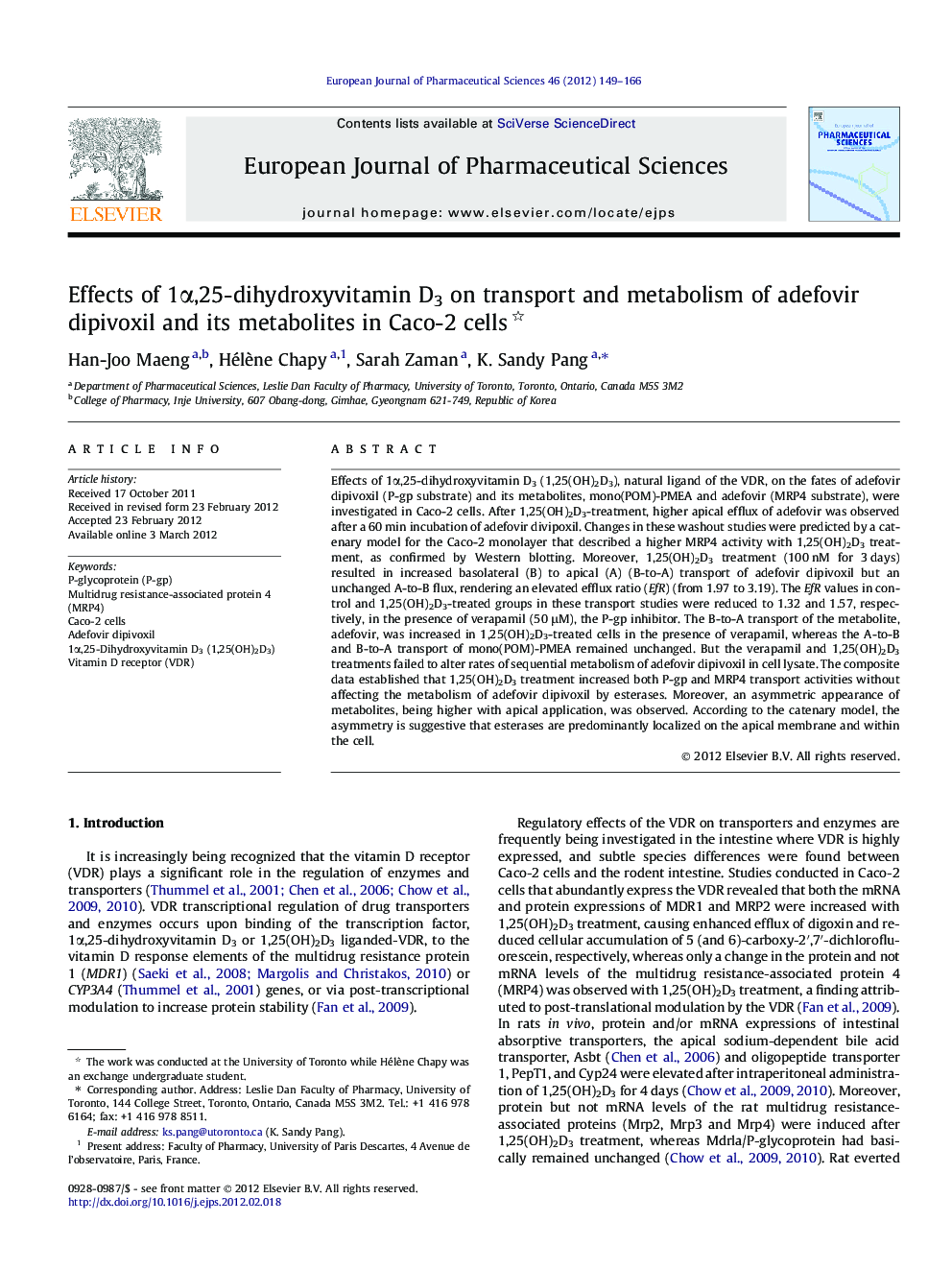| کد مقاله | کد نشریه | سال انتشار | مقاله انگلیسی | نسخه تمام متن |
|---|---|---|---|---|
| 2481432 | 1556220 | 2012 | 18 صفحه PDF | دانلود رایگان |

Effects of 1α,25-dihydroxyvitamin D3 (1,25(OH)2D3), natural ligand of the VDR, on the fates of adefovir dipivoxil (P-gp substrate) and its metabolites, mono(POM)-PMEA and adefovir (MRP4 substrate), were investigated in Caco-2 cells. After 1,25(OH)2D3-treatment, higher apical efflux of adefovir was observed after a 60 min incubation of adefovir divipoxil. Changes in these washout studies were predicted by a catenary model for the Caco-2 monolayer that described a higher MRP4 activity with 1,25(OH)2D3 treatment, as confirmed by Western blotting. Moreover, 1,25(OH)2D3 treatment (100 nM for 3 days) resulted in increased basolateral (B) to apical (A) (B-to-A) transport of adefovir dipivoxil but an unchanged A-to-B flux, rendering an elevated efflux ratio (EfR) (from 1.97 to 3.19). The EfR values in control and 1,25(OH)2D3-treated groups in these transport studies were reduced to 1.32 and 1.57, respectively, in the presence of verapamil (50 μM), the P-gp inhibitor. The B-to-A transport of the metabolite, adefovir, was increased in 1,25(OH)2D3-treated cells in the presence of verapamil, whereas the A-to-B and B-to-A transport of mono(POM)-PMEA remained unchanged. But the verapamil and 1,25(OH)2D3 treatments failed to alter rates of sequential metabolism of adefovir dipivoxil in cell lysate. The composite data established that 1,25(OH)2D3 treatment increased both P-gp and MRP4 transport activities without affecting the metabolism of adefovir dipivoxil by esterases. Moreover, an asymmetric appearance of metabolites, being higher with apical application, was observed. According to the catenary model, the asymmetry is suggestive that esterases are predominantly localized on the apical membrane and within the cell.
Figure optionsDownload high-quality image (217 K)Download as PowerPoint slide
Journal: European Journal of Pharmaceutical Sciences - Volume 46, Issue 3, 14 June 2012, Pages 149–166